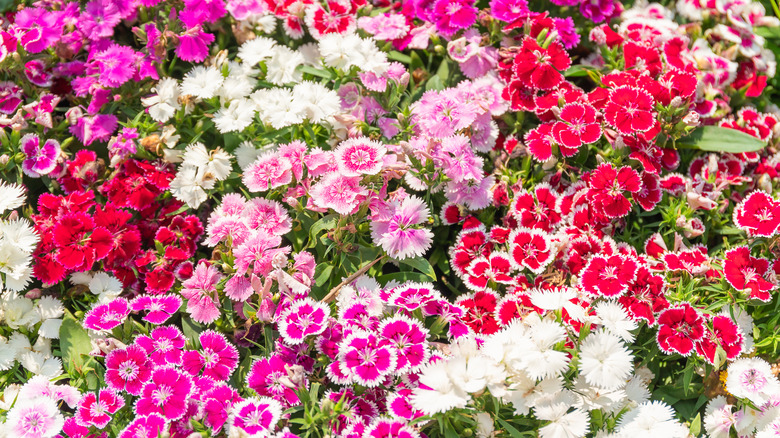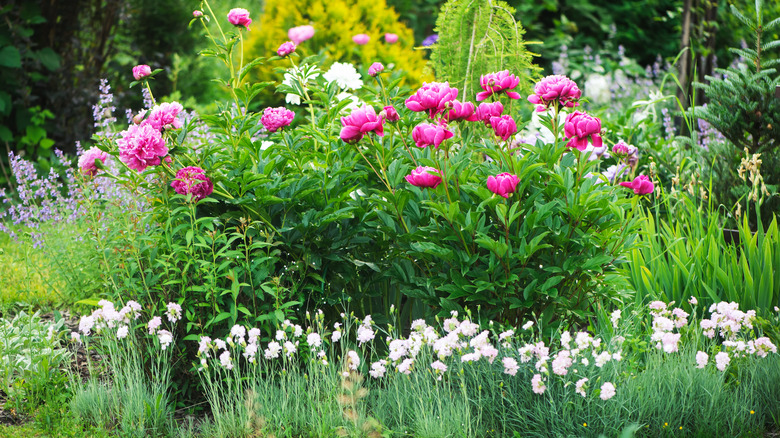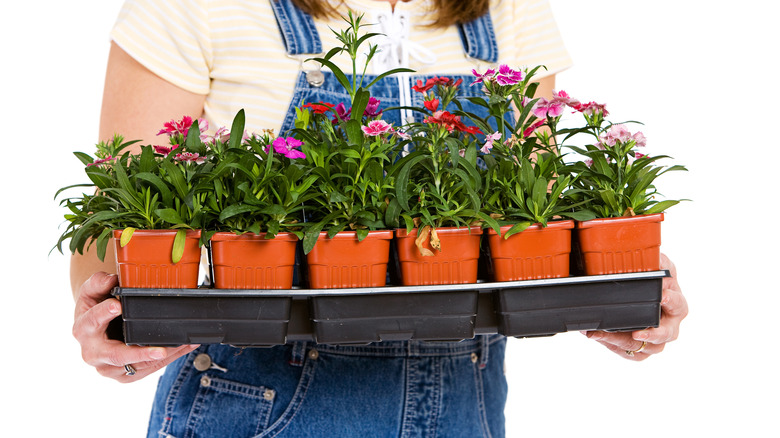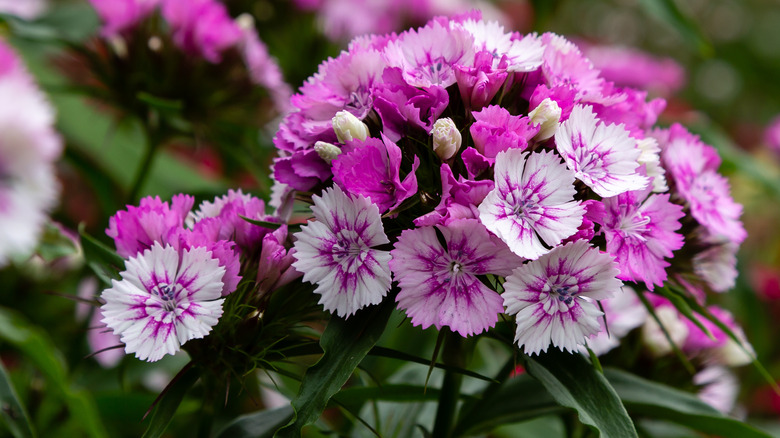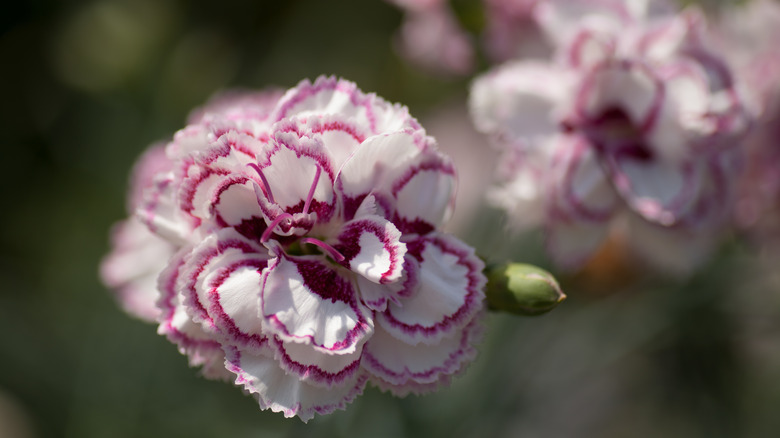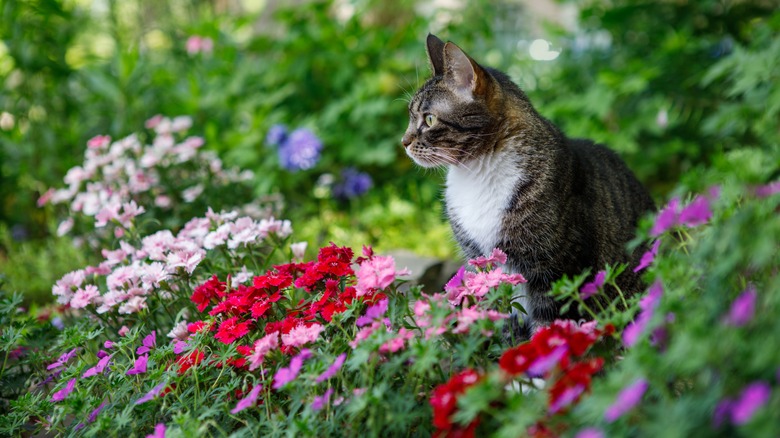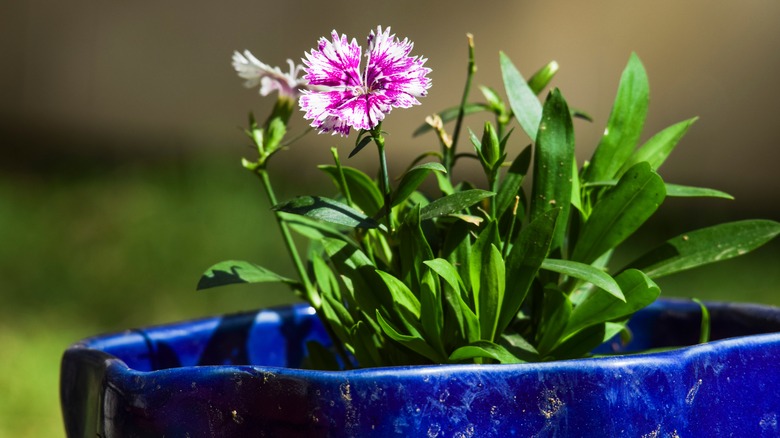How To Grow And Take Care Of Dianthus Flowers
Dianthus flowers (Dianthus spp.), also known as pinks carnations, are lovely cottage garden flowers featuring blooms in shades of white through dark red. These flowers are often two-toned in color and smell spicy, like cinnamon or cloves. Over 300 varieties of dianthus flowers exist, and they are available as perennials, annuals, or biennials, all relatively low-maintenance to care for. Blooming throughout the summer, from late spring to early fall, dianthus flowers are sure to bring lots of color and life to your garden.
Gardener's Path discusses the origin and rich history of dianthus flowers. These flowering plants are native to Europe, Asia, and North Africa and have been grown and cultivated for centuries. The name is Greek, coming from the words "Dios" meaning god and "anthos" meaning flower, forming the phrase "flower of the gods." There are many myths about how these flowers were named from both Greek mythology and Christian traditions. Dianthus flowers are still popular among gardeners today and make a great addition to any garden.
How to use dianthus flowers in your garden
Growing to be 6 to 36 inches tall and 6 to 24 inches wide, dianthus flowers shine in many areas of your garden. Dianthus flowers work well in borders or along patios and decks. Because dianthus flowers are easy to care for and have an unstructured, whimsical nature to them, they are often used in cottage gardens. According to Garden Design, these cottage-style flowers work well with similar style plants such as irises, roses, coral bells, and lavender.
You can also plant dianthus flowers in containers and place them around your garden: They look beautiful in containers around an entryway or on a balcony. Planting dianthus in window boxes is also a popular option. Taller varieties of dianthus flowers look great in the back of planters behind shorter plants or in beds with shorter annuals and perennials. In addition, towering varieties of these flowers, such as the carnation type, are great when planted with other flowers used for cuttings, including dahlias, sweet peas, and sunflowers.
How to grow dianthus flowers
Growing dianthus flowers is an easy process as they can be matured from seeds or propagation. The Spruce explains how to grow dianthus flowers from seeds by first planting them in a seed tray a few weeks before the final frost. Keep the tray in a sunny location while the seedlings germinate, which takes a little over a week. Once the seedlings reach 4 inches tall, they can be planted outside in a lighter soil type in a sunny location after the last frost of the winter.
Dianthus flowers can also grow from stem cut propagations. When you have a plant that has bloomed for an entire season, you can take a 2- to 3-inch cutting in June or July. The end of the stem should be dipped in rooting hormone and planted in a mix of potting soil and vermiculite. Keep the soil moist and the pot in a sunny location. The cutting can be transplanted outdoors or into a larger pot when a new leaf grows and the stems or seedlings should be planted 12 to 18 inches apart.
How to care for dianthus flowers
Known as a relatively low-maintenance plant, dianthus flowers are easy to care for, per Gardening Know How. These plants need at least six hours of sunlight a day to grow and bloom regularly, so planting them in an area with full or partial sunlight is essential. They also need potting soil that drains well and water only at the base to prevent mildew. While they are germinating and growing, they require regular watering, but once they are established and blooming, they don't need frequent watering. These plants need fertilizer every six to eight weeks, although if you plant them with slow-release fertilizer, they will grow beautifully and don't need other enriching.
Because dianthus perennial flowers are self-sowing plants, deadheading is important to control their growth. When blooms have faded, cut them off the plant, along with any dead or diseased stems or leaves. Deadheading will also help varieties that bloom several times to produce more flowers. In the fall, make sure to cut the plant back so there are only a few inches of stem above the soil. The perennial versions of dianthus only last a few years, so it is essential to divide and propagate the plants if you want to keep these flowers in your garden long-term.
Varieties of dianthus flowers
There are over 300 dianthus flowers types, varying in size and color. Most varieties feature a whimsical look and an incredibly easy-to-care-for nature, so you'll want to make space in your garden for this flower if you're looking for some classic pinks and a bit of color. Gardens Illustrated provides some examples of the most popular varieties of dianthus flowers.
-
Dianthus Gran's Favorite: Grown since 1960, this stunning variety features clumps white petaled flowers with ruffled bright pink edges.
-
Dianthus Murray Douglas: Similar to carnation varieties of dianthus flowers, these blooms are a pink color with clusters of petals.
-
Dianthus Solomon: Truly unique in their appearance, these dianthus flowers are deep red and have spiky petals.
-
Dianthus Painted Lady: With half pink, half white petals, these sweet-smelling flowers were first grown in 1700 in Great Britain.
-
Dianthus Old Square Eyes: These dianthus flowers feature white petals with salmon-colored frilly edges.
Are dianthus flowers toxic?
Although dianthus flowers are a beautiful addition to your garden, they are minorly toxic to humans. Dianthus flowers have been known to occasionally cause skin irritation, although it may only last for a few minutes. According to Garden Guides, the leaves of this plant are toxic to humans when ingested. On the other hand, the petals of the carnation variety of dianthus flowers can be candied or used as garnishes and can be safely eaten.
Because these flowers can be somewhat harmful, you might want to be mindful of children playing nearby. Moreover, dianthus flowers are more toxic to dogs and cats than humans. If your dogs or cats ingest dianthus flowers, they may experience mild gastrointestinal distress. To avoid these symptoms, do not plant your dianthus flowers where your pets can access them. If your pets have ingested large amounts of the plant, seek veterinary care.
How to repot dianthus flowers
Dianthus flowers are a fantastic choice if you are looking for a blossoming plant to use in containers and pots around your garden. These plants do well in areas that receive sunlight and in spots with a light soil type. You can plant your dianthus flower seedlings into pots or containers or transplant already established plants. Plant Addicts explains how to repot dianthus flowers, and it's an easy process.
To repot your dianthus flowers, first dig up your original plant. The roots of dianthus flowers are shallow, so it should be easy to scoop up the plant. Next, dig a hole in your new pot that is two to three times larger than the roots of the original plant. Use soil that allows water to drain without pooling in the pot, mixing in manure or slow-release fertilizer. Place the plant in the new container and pack the soil back around it. Give the plant proper watering to help it establish in its new pot, and your dianthus flowers should bloom beautifully.
